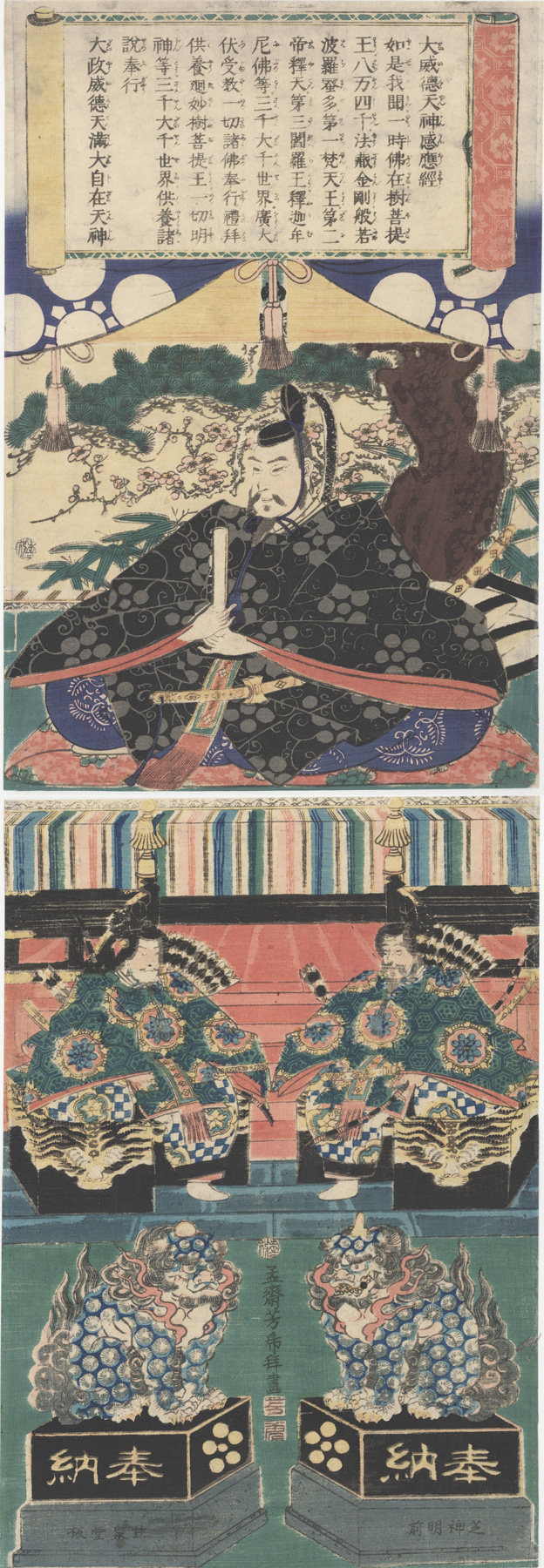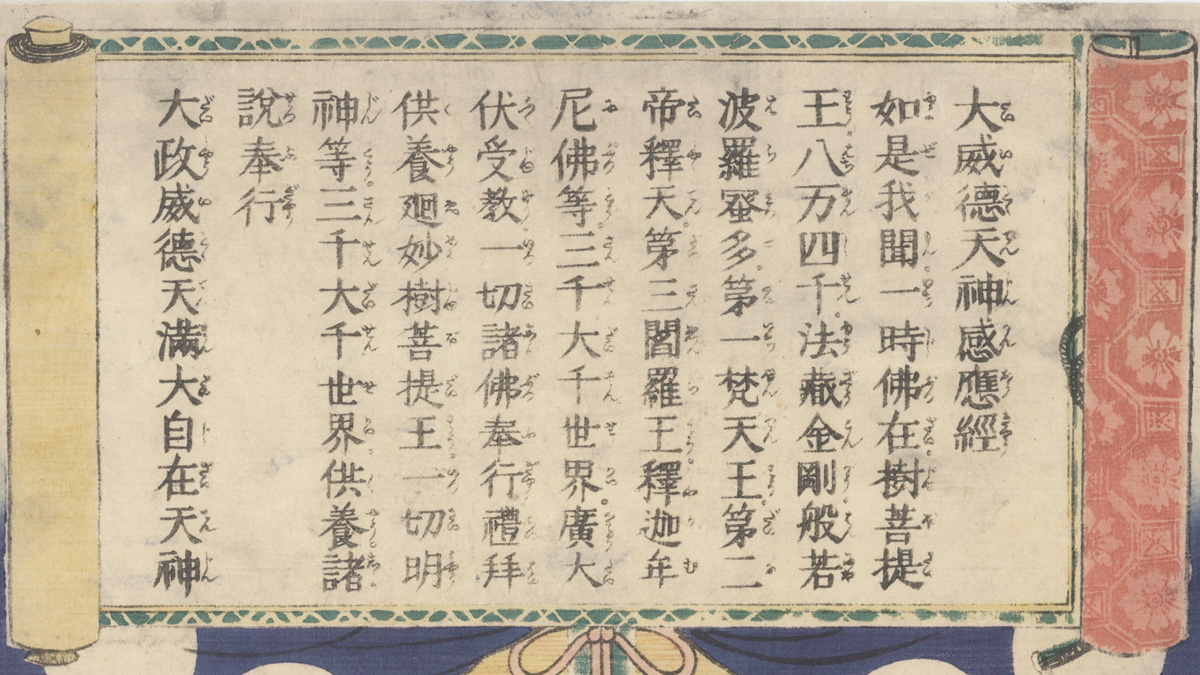About This Print
This vertical diptych depicts Sugawara no Michizane, 菅原道真 (845–903), who after his death in exile was elevated to "Tenjin" (a god who was originally mortal), sitting in the Tenman Shrine. Behind him is a painting of a plum tree, ume, alluding to his famous poem written in exile in which he laments the absence of a particular plum tree he had loved in the capital. Beneath him, on the bottom sheet, are his guardian attendants and two komainu (guardian dogs) on pedestals, each pedestal bearing the characters 奉納 (hōnō) "votive offering."
Known as the patron of scholarship, Tenjin shrines are visited by multitudes of students each year as entrance exams approach. Votive offerings are made requesting academic success and admission to the college of their choice. In commenting on this yearly student pilgrimage, Professor Emeritus Robert Borgan writes, "They give the impression that Japan's largely secular youth is experiencing a religious revival."1
The Historical Figure Sugawara no Michizane
Source: British Museum website http://www.britishmuseum.org/explore/highlights/highlight_objects/asia/s/sugawara_no_michizane_in_chine.aspx
Sugawara no Michizane 菅原 道真 (845-903) an outstanding cultural figure of the Heian period (794 -1185), is still widely regarded in Japan as the patron of scholarship. He was a scholar of Chinese and also a politician who rose to be Minister of the Right, one of the highest ranks in the government of the time. However, he was exiled to Kyūshū as the result of a conspiracy of the Fujiwara family. After his death in exile there were several disasters in the capital of Kyoto which people believed were caused by his angry spirit. He was therefore reinstated and raised to the rank of a Shintō deity (renamed Karai Tenjin) and the Kitano Shrine was founded in his memory. In the Muromachi period (1333-1568) there was a revival of interest in kambun (Chinese-style writing) and Michizane's reputation was re-established as the greatest Japanese poet who had written in the Chinese language.
One of his most famous poems . . . is his farewell to the beloved plum tree in his garden, written shortly before going into exile.
When blows the eastern wind,
Send to me your fragrance,
O flower of the plum
Though absent from your master,
Forget not the season of spring.
大政威徳天満大自在天神
2 Terakoya (temple schools) were public educational institutions that provided children with an education of reading and writing and in some places taught the use of the abacus. They existed not only in Edo but also in other towns and villages throughout Japan. The number of terakoya at the end of the Tokugawa Shogunate seems to have reached some thirty or forty thousand and it was these institutions that contributed to the high levels of literacy among ordinary people.
Print Details
| IHL Catalog | #1711 |
| Title or Description | The Great Virtue and Influence of the Inspiring Tenjin Sutra 大威徳天神感應經 Dai Itoku Tenjin kannō kyō だいいとくてんじんかんのうきょう |
| Artist | Utagawa Yoshitora (fl. c. 1836-1882) |
| Signature |  |
| Seal | 芳虎 Yoshitora (see above) |
| Publication Date |   安政6年2月(1859) |
| Publisher | 芝神明前 Shiba Shinmei 甘泉堂板 Kansendōhan publisher name 和泉屋市兵衛(甘泉堂) Izumaya Ichibei (Kansendō) Marks: Pub. ref. 180; seal ref. not shown |
| Impression | fair - poor registration |
| Colors | good |
| Condition | good - paper rubbed; not backed; separate sheets |
| Genre | ukiyo-e; kaika-e |
| Miscellaneous | |
| Format | vertical oban diptych |
| H x W Paper | (T) 14 3/8 x 9 5/8 in. (36.5 x 24.4 cm); (B) 14 x 9 11/16 in. (35.6 x 24.6 cm) |
| Literature | |
| Collections This Print | Shizuoka Prefectural Central Library K915-110-072 |



